
Saturday, 30 June 2018
Blaze has been waiting so long for his forever family. Give this beautiful “beast” a look!

Blaze has been waiting so long for his forever family. Give this beautiful “beast” a look!
from Life With Dogs https://ift.tt/2lIrhbv
Here’s How Petting A Dog Impacts Your Brain

We’ve already talked about how dogs can help improve depression and your overall health, but new research is showing exactly how petting a dog affects our brains, and it’s just one more way that dogs make our lives better. Here’s how petting a dog impacts your brain, along with other ways dogs improve our lives.

How petting a dog impacts your brain
You might think that our brains process all the things we touch in the same way, but it turns out that isn’t true. The brain divides things that touch our skin into three categories: “pleasant,” “neutral,” and “unpleasant.” Each of these is interpreted in different ways in an area of the brain called the anterior cingulate cortex. This area of the brain is responsible for a lot of emotional processing, so a pleasant feeling on the skin elicits positive emotions.
Petting a dog also releases serotonin and dopamine, two feel-good chemicals that can improve your mood. Serotonin and dopamine levels are often low in people who suffer from depression, so having a dog can help improve symptoms in depression sufferers.
Better than that, staring in the eyes of a dog you know releases oxytocin – the hormone that helps bond a mother and child.

How dogs affect our bodies
Therapy dogs have been proven to reduce the stress in students taking exams, people grieving the loss of a loved one, children in the hospital, and people traveling through airports. Stress releases cortisol into your bloodstream, a hormone that can cause all sorts of negative impacts on your body. Petting dogs has been shown to decrease the levels of cortisol in your bloodstream.
Having a dog can also reduce your blood pressure and the chances of dying from a heart attack. The companionship provided by a dog can also reduce levels of anxiety.
People who own dogs walk more than people who don’t, which helps prevent obesity and the health risks that go along with it. Walking your dog during the day has the added benefit of getting vitamin D from the sun, and a lack of sunlight has been proven to have a negative effect on people’s mental state.
Growing up with a dog has also been shown to reduce allergies in children by giving their immune system something “harmless” to practice on.

The importance of touch to people
People are programmed to need touch in their lives. Friendly, supportive touch from other humans has been shown to reduce stress, lower blood pressure, and release serotonin, dopamine, and oxytocin – all the same things that petting a dog does. In the absence of enough human touch, petting a dog can fulfill that deep need we all have to be touched.
We already know how much dogs improve our lives every day, but it’s always cool to see science confirming what dog lovers have known for years – nothing is better than the love of a dog!
from iHeartDogs.com https://ift.tt/2IEBLlg
Larry Nassar Is Indicted on Sexual Assault Charges in Texas
By THE ASSOCIATED PRESS from NYT Sports https://ift.tt/2lISY47
from Tumblr https://ift.tt/2KiLKlT
Corrections: June 30, 2018
By Unknown Author from NYT Corrections https://ift.tt/2KA5NLW
from Tumblr https://ift.tt/2KvQikX
At the Capital Gazette, the Death of a Reporter’s Reporter

By LAURA LIPPMAN from NYT Opinion https://ift.tt/2KCQH8N
from Tumblr https://ift.tt/2KtEwea
Will Mexico Get Its Donald?

By BRET STEPHENS from NYT Opinion https://ift.tt/2N8e0W6
from Tumblr https://ift.tt/2IEW6Xv
Dave Eggers: A Cultural Vacuum in Trump’s White House

By DAVE EGGERS from NYT Opinion https://ift.tt/2IETLfl
from Tumblr https://ift.tt/2KiLIKN
Funeral Is Held for Firefighter Killed by Ground Zero Toxins

By BENJAMIN MUELLER from NYT New York https://ift.tt/2lLfnOi
from Tumblr https://ift.tt/2KD6f9i
Reason to Bow

By CAITLIN LOVINGER from NYT Crosswords & Games https://ift.tt/2MAcuuT
from Tumblr https://ift.tt/2KiLH9H
What the International Committee of the Red Cross Can Teach Trump About Reuniting Families
Philip Gourevitch on what the International Committee of the Red Cross could teach Trump about reuniting families separated by his Administration’s zero-tolerance immigration policy.
from Everything https://ift.tt/2MCsgWj
from Tumblr https://ift.tt/2Kwob53
Donald Trump’s America and the Visions of David Lynch
Dennis Lim on Donald Trump’s America and the artistic visions of David Lynch, as seen in “Twin Peaks” and “Blue Velvet.”
from Everything https://ift.tt/2tPjlc9
from Tumblr https://ift.tt/2KiLDqt
The Magic Putin Hopes to Make with Trump in Helsinki
From Moscow, Joshua Yaffa writes about the coming summit in Helsinki between Donald Trump and Vladimir Putin, and what the Russian President will seek to get out of the meeting.
from Everything https://ift.tt/2KxdzmG
from Tumblr https://ift.tt/2KAmnbt
Breed-Specific Health Risks
Folded into every dog’s double helix—39 chromosomes containing about 2.5 billion base pairs of DNA—are clues to that dog’s current and future health risks. The more we learn about the canine genome, the more clearly these clues can be deciphered.
For centuries, people have deliberately bred dogs for dozens of purposes, from practical to decorative. The more closely a line of dogs hewed to the desired purpose, the more focused the breeding became. Consequently, genetic glitches that might’ve been lost in the crowd were amplified, resulting in the more than 350 inherited canine diseases currently known to exist.
from The Bark https://ift.tt/2NaUkAY
Friday, 29 June 2018
Taking Care of Kelly: Can I Afford This?
On June 1st, 2014 I found a massive softball-sized lump protruding from Kelly’s left hind leg. Having no idea what this could be I took her to our local vet Dr. Swinamer at Companion Animal Hospital. Dr. Swinamer advised, “this has to come out tomorrow!” The mass was removed and sent out for testing, and […]
The post Taking Care of Kelly: Can I Afford This? appeared first on The Trupanion Blog.
from The Trupanion Blog https://ift.tt/2yThxor
Mervin is cranky. And noisy. And beloved beyond belief.
Read more
from Life With Dogs https://ift.tt/2yUtPNj
How To Teach Your Dog The “Quiet” Command

If you have a dog who barks incessantly for whatever reason – to be fed, at the mailman, because he’s bored, to get your attention – you’re probably wishing your dog had an “off” switch. Even if the barking doesn’t bother you, per se, you don’t want to be “that neighbor” with the obnoxious barking dog that everybody hates. So what can you do? Shouting at him to shut up rarely helps. Luckily, there is a way to get your dog to quit barking on cue.

It may help to teach your dog to “speak” first so that you can teach “quiet” on your own schedule. Otherwise, you’re stuck waiting for your dog to bark before you can work on training sessions. If that’s the case, make sure you always have treats handy so that you’re ready whenever the opportunity presents itself.
If you’ve used a clicker for training in the past, or want to start using one now, you’ll want to start by making sure your dog learns or remembers that the sound of a clicker means that a treat is coming. Start by just clicking and rewarding your dog without asking for any behaviors first, then work your way up to commands that your dog already knows before moving on to new things.
To teach your dog to “speak,” do something you know will trigger him to bark, such as ringing the doorbell. As soon as he barks, say “speak” and give him a treat. After doing this a bunch of times, just give him the command “speak,” and if he barks, reward him handsomely.

After asking your dog to “speak” or waiting until he decides to bark, say “quiet” while sticking a treat in front of his nose. As soon as your dog stops barking to sniff the treat, reward your dog (with or without clicking first) with a treat and verbal praise. Once your dog understands that stopping barking earns him treats, start giving him less time to quiet down before giving him the treat. For example, only give him the treat if he stops barking within 10 seconds. After that, start giving him less and less time to stop barking before you reward him with a treat.
Once your dog stops barking immediately upon hearing the “quiet” command, increase the amount of time you make him wait before rewarding him with a treat. Start with just a few seconds and gradually increase the wait time. Eventually, you should only have to reward him with treats periodically for being quiet after hearing the command. You should always give your dog verbal praise for following your commands.

Once your dog has this down pat, he’ll suddenly have an “off” switch for his barking!
(H/T: Good Doggies, Doggie Buddy)
from iHeartDogs.com https://ift.tt/2KzmGTM
Short Film Gives A New, Unique Look At The Land Of The Strays
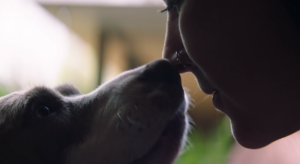
If you haven’t been living under a rock, you’ve heard of Territorio de Zaguates: the amazing “Land of the Strays” in Costa Rica. Lya Battle and husband Alvaro Saumet Martinez are living every dog lover’s ultimate dream – to rescue every dog in need that they see! iHeartDogs has featured their sanctuary before, and we are big fans of the work they do!
The 375 acre farm is home to over 1,000 dogs, and looks like paradise. Who wouldn’t want to live surrounded by dogs, playing and caring for these sweet creatures who were once strays?
But paradise isn’t pain-free. Lya and Alvaro have taken in dogs who have been hurt and thought to be beyond recovery – but that has never stopped them from opening their hearts to any pup. In a short film from Rook Hill Productions that was recently chosen as a Vimeo Staff Pick, we get a deeper look at the Land of the Strays. In just a few short minutes, we see the passion and selfless dedication Lya and Alvaro have for these dogs, and learn how much heartbreak is involved in giving these dogs heaven.
Land of the Strays from Adrian Cicerone on Vimeo.
You can visit Territorio de Zaguates on Facebook, and even arrange to visit in person! Click here to donate to help Lya and Alvaro continue to fight pet homelessness in Costa Rica. Visit Rook Hill Productions online.
Featured Photo: Screenshot via Rook Hill Productions/Vimeo
from iHeartDogs.com https://ift.tt/2Kiaefk
8 Subtle Signs Your Dog Is In Pain

Chances are, you know your dog’s mannerisms and behaviors pretty darn well, and you can tell when they’re excited, hungry, scared, and the like. But signs of pain can be less obvious, especially if it’s a new symptom and they’re exhibiting a behavior that you’re not used to seeing.
If your pup is showing one or more of the signs below, it’s best to call your vet for a check-up. Whether the issue is minor or major, your loyal companion doesn’t deserve to live in pain any longer than he or she has to. You know your dog best, and if something seems “off,” it’s better to be safe than sorry!
1. Excessive Grooming
Dogs naturally groom their fur, paws, and some personal areas, but if they seem to be doing it constantly or obsessively, it could be a sign that something is hurting. It can also indicate itchy and uncomfortable skin allergies, especially if it’s around the feet, and dogs can even lick or chew themselves raw.
However, this can be a sign of internal pain, too. Katie Finley, a writer and dog trainer, explains:
“Pets will often groom places that are sources of pain in hopes to clean and care for the wound, even if there is no open wound present. Be sure to keep an eye on the area and inspect it gently.”
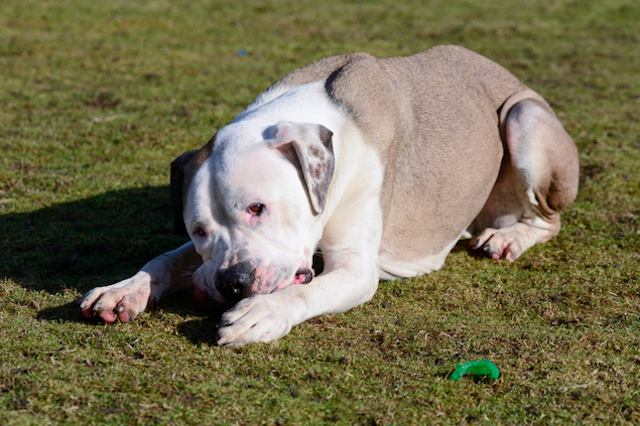
2. Poor Coat Quality
On the other end of the spectrum, dogs who aren’t feeling well may stop grooming themselves as thoroughly as they used to. This is because something is causing them discomfort, and it’s possible that they can’t reach certain without feeling pain.
3. Heavy or Shallow Panting
Our pups pant for multiple reasons, like to cool down when it’s hot out or after exercise, or even when they’re stressed. But if your pooch starts panting heavily for seemingly no reason, it could be a sign that he is in pain. Likewise, if his panting becomes shallow — as if it’s difficult or hurts to breathe — this symptom should not be ignored. Check out How To Tell If Your Dog’s Panting Isn’t Normal for more information.

4. Inappetence
If your pooch stops eating, especially if she’s usually a chow hound, you should call your vet sooner than later. Inappetence can be the result of anything from an upset tummy, to cancer, to a sore limb that’s making it difficult to enjoy a meal. What’s more, they could be in too much pain to make it over to their food bowl.
5. Avoidance or Aggressiveness
When an animal starts avoiding their loved ones or lashing out in a manner that’s out of character, something is probably wrong. They may avoid being touched because it hurts or is uncomfortable, and they have no other way of letting you know.

6. Inability To Get Comfortable
It’s normal for dogs to circle and even scratch at their bed before laying down and getting cozy. But if your dog keeps spinning, or seems like they cannot settle, they may be hurting and simply can’t find a way to get comfortable.
7. Constipation
Constipation can be a sign of many different issues. One possibility is that it hurts to squat, and another is that going to the bathroom has become painful. Finley says:
“Back and hip pain can lead to constipation in dogs because it can be very uncomfortable to get in the proper squatting position. If you notice your dog suddenly seems constipated or cries out when going to the bathroom, there’s a good chance that they’re in pain. “

8. Behavior Changes
You know your dog’s personality, routine, and habits, so if something seems strange or odd to you — no matter how minor it is — it’s always best to check with the vet. Aside from sudden avoidance, aggressiveness, or obvious limping, some more subtle changes in behavior may include:
- Avoiding stairs, jumping, or climbing
- Increased stiffness
- Arching of the back
- Different laying positions (for instance, a dog who usually sleeps curled up in his bed may start laying flat on his side if he’s in pain)
- Slower to move or get up
- Disinterested in things he used to love (walks, food, greeting you at the door)
- Accidents in the house (it may be too painful to get up, or it could be something else)
- Different / odd sounding bark
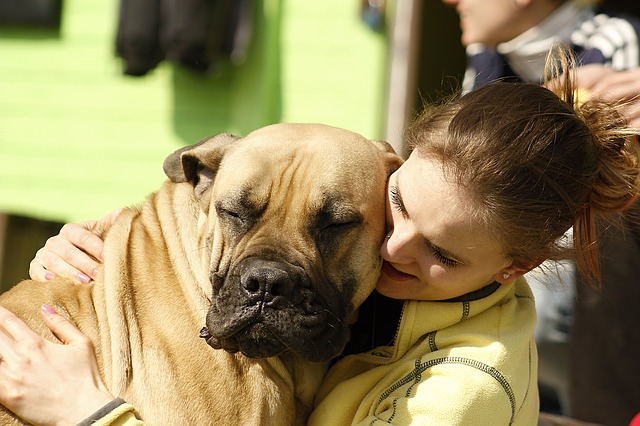
Dogs of all ages can experience pain for any number of reasons, from illnesses to accidents. It’s likely that at some point in your pup’s life, they’ll get stiff and achy as they age. But if you pay close attention and trust your instincts, you’ll be able to help ease your companion’s discomfort by finding a solution as quickly as possible. After all, they’d do the same for you, and in their own way, they do — by making each day brighter!
from iHeartDogs.com https://ift.tt/2IAwFGT
8 Subtle Signs Your Dog Is In Pain

Chances are, you know your dog’s mannerisms and behaviors pretty darn well, and you can tell when they’re excited, hungry, scared, and the like. But signs of pain can be less obvious, especially if it’s a new symptom and they’re exhibiting a behavior that you’re not used to seeing.
If your pup is showing one or more of the signs below, it’s best to call your vet for a check-up. Whether the issue is minor or major, your loyal companion doesn’t deserve to live in pain any longer than he or she has to. You know your dog best, and if something seems “off,” it’s better to be safe than sorry!
1. Excessive Grooming
Dogs naturally groom their fur, paws, and some personal areas, but if they seem to be doing it constantly or obsessively, it could be a sign that something is hurting. It can also indicate itchy and uncomfortable skin allergies, especially if it’s around the feet, and dogs can even lick or chew themselves raw.
However, this can be a sign of internal pain, too. Katie Finley, a writer and dog trainer, explains:
“Pets will often groom places that are sources of pain in hopes to clean and care for the wound, even if there is no open wound present. Be sure to keep an eye on the area and inspect it gently.”

2. Poor Coat Quality
On the other end of the spectrum, dogs who aren’t feeling well may stop grooming themselves as thoroughly as they used to. This is because something is causing them discomfort, and it’s possible that they can’t reach certain without feeling pain.
3. Heavy or Shallow Panting
Our pups pant for multiple reasons, like to cool down when it’s hot out or after exercise, or even when they’re stressed. But if your pooch starts panting heavily for seemingly no reason, it could be a sign that he is in pain. Likewise, if his panting becomes shallow — as if it’s difficult or hurts to breathe — this symptom should not be ignored. Check out How To Tell If Your Dog’s Panting Isn’t Normal for more information.

4. Inappetence
If your pooch stops eating, especially if she’s usually a chow hound, you should call your vet sooner than later. Inappetence can be the result of anything from an upset tummy, to cancer, to a sore limb that’s making it difficult to enjoy a meal. What’s more, they could be in too much pain to make it over to their food bowl.
5. Avoidance or Aggressiveness
When an animal starts avoiding their loved ones or lashing out in a manner that’s out of character, something is probably wrong. They may avoid being touched because it hurts or is uncomfortable, and they have no other way of letting you know.

6. Inability To Get Comfortable
It’s normal for dogs to circle and even scratch at their bed before laying down and getting cozy. But if your dog keeps spinning, or seems like they cannot settle, they may be hurting and simply can’t find a way to get comfortable.
7. Constipation
Constipation can be a sign of many different issues. One possibility is that it hurts to squat, and another is that going to the bathroom has become painful. Finley says:
“Back and hip pain can lead to constipation in dogs because it can be very uncomfortable to get in the proper squatting position. If you notice your dog suddenly seems constipated or cries out when going to the bathroom, there’s a good chance that they’re in pain. “

8. Behavior Changes
You know your dog’s personality, routine, and habits, so if something seems strange or odd to you — no matter how minor it is — it’s always best to check with the vet. Aside from sudden avoidance, aggressiveness, or obvious limping, some more subtle changes in behavior may include:
- Avoiding stairs, jumping, or climbing
- Increased stiffness
- Arching of the back
- Different laying positions (for instance, a dog who usually sleeps curled up in his bed may start laying flat on his side if he’s in pain)
- Slower to move or get up
- Disinterested in things he used to love (walks, food, greeting you at the door)
- Accidents in the house (it may be too painful to get up, or it could be something else)
- Different / odd sounding bark

Dogs of all ages can experience pain for any number of reasons, from illnesses to accidents. It’s likely that at some point in your pup’s life, they’ll get stiff and achy as they age. But if you pay close attention and trust your instincts, you’ll be able to help ease your companion’s discomfort by finding a solution as quickly as possible. After all, they’d do the same for you, and in their own way, they do — by making each day brighter!
from iHeartDogs.com https://ift.tt/2KiabQG
Ohio Hopes To Set National Standard For Puppy Mill Regulations

A new law that will impose restrictions and regulations on puppy mills is headed for the desk of Ohio Governor John Kasich. The legislation, which has already cleared Ohio’s House and Senate, is a compromise that aims to reduce the abuses high-volume puppy breeders can get away with while preventing a ballot that would aim to place puppy mill restrictions in the state’s Constitution.

The Humane Society of the United States had aimed to push a ballot that would put puppy mill restrictions in the state’s Constitution after a state law that passed last year (and was pushed by global pet retailer Petland) negated ordinances in Toledo and a Columbus suburb that aimed to prohibit pet stores and other retailers from getting the dogs they sell from puppy mills. The new compromise means that further puppy mill restrictions will be kept off Ohio’s ballot for the next decade, but proponents still hope it will set a national standard for regulating puppy mills.
Under House Bill 506, any retailer who sells dogs would need their supplier to sign a document saying that they follow Ohio’s standards of care in regards to the feeding, housing, veterinary care, exercise, and human interaction of their animals.

The new law defines “high volume breeders” as those that keep at least six breeding dogs on the premises and either sell at least five dogs per year to brokers or retailers, sell at least 40 dogs directly to the public, or keep at least 40 or more puppies younger than 4 months that were bred on the premises. These high volume breeders will require annual licenses ranging from $150 to $750. Violating the law would bring civil penalties of $2,500 for the first offense and $5,000 for subsequent violations.
John Goodwin, senior director of the humane society’s national Stop Puppy Mills Campaign, helped negotiate the compromise. He said:
“We’ll see how it plays out. Ohio will be the first state in the nation to say that a sourcing requirement, where sellers get puppies, will be taken into account as well as the conditions in which breeding dogs live. Ohio is one of the most populous states in the nation, and there aren’t a lot of commercial dog breeding kennels in other states that meet these standards.”

Both sides involved in the compromise say they hope this new law will lead to higher standards for puppy mills across the country.
(H/T: Fox8, Toledo Blade)
from iHeartDogs.com https://ift.tt/2Nb9INZ
How To Get The Most From Your Senior Dog’s Vet Appointment

As our dogs age, their health needs and problems change, too. As your dog approaches his senior years, vet visits are likely to change as a result. Each vet visit is an opportunity to find out how your dog’s health is doing and how you can help him live for many more healthy, happy years. It does take a little bit of preparation, but we’re here to help you get the most from your senior dog’s vet appointment.

When you make the appointment, ask if you should do or bring anything.
You may be asked to bring a urine or fecal sample, or you may be asked to fast your dog for 12 hours before the appointment. They should tell you these things when you make the appointment, but people get busy and may forget, so be sure to ask before you hang up the phone so you don’t wind up needing to come back at a later date or time with the things you need.
Bring medical records and medication, supplement, and vitamin information
This is especially important when you’re seeing a new vet, but it never hurts to bring this information to every appointment. If you have added or changed any supplements or vitamins in your dog’s routine, your vet will need that information.
Know your dog’s diet
Be prepared to answer questions about what, how much, and how often you feed your dog. Your vet may suggest changing your dog’s food to a senior formula, for example, or if your dog is overweight they may suggest that you feed less of what you’re currently feeding.
Bring a mat or a blanket
If your dog has aching, arthritic joints, lying on cold linoleum while you’re waiting to be seen can be painful. Consider bringing a mat or a blanket for him to lie on instead.
Keep your dog leashed while waiting
Even if your dog is calm and friendly at the vet, not every dog is the same. Keeping every dog on a leash helps prevent problems in the waiting room.

Be prepared to answer and ask questions.
Your vet will likely ask you lots of questions about your dog’s recent behavior, and you should be prepared to ask plenty of questions also. A vet appointment shouldn’t be just about examining your dog – it should include a long talk about the current state of his health, how it may change, what changes to look for, and how to keep him healthy as long as possible. Here are some questions you should consider asking at your senior dog’s vet visit.
At what age is my dog considered “senior”?
The old wisdom was that one dog year equaled 7 human years, but that isn’t entirely accurate. A dog is considered “senior” in the last quarter of their life. Since different sizes and breeds of dogs have different average lifespans, the age your dog is considered a senior will vary. Large and giant breeds can be considered senior as young as 6 years old, while toy breeds might not be considered senior until they’re 12. Ask your vet at what age he would consider your dog a senior since senior dogs have different health requirements than adult dogs.
Is there a difference between a senior dog health check and an adult health check?
As your dog ages, your vet may want to order more or different testing for your dog when you come in for appointments. Ask him what to expect going forward.

What health risks are common in senior dogs?
Just like humans, dogs are prone to many health problems as they age. Half of all dogs over the age of 10 will be diagnosed with cancer. Diabetes, kidney, and heart problems are also conditions that can manifest in senior dogs. Your vet may know of diseases that are more common in your breed of dog and what symptoms you should be on the lookout for.
How often should my dog come in?
While many adult dogs are fine with just one vet visit per year, your vet may recommend that your senior dog starts coming in twice a year. If your dog has a chronic health problem, he may need to come in even more frequently than that.
How is my dog’s weight?
Obesity is a big problem in our pets these days, with nearly half the dogs in this country considered overweight. Carrying around a few extra pounds can increase strain on arthritic joints and increase your dog’s likelihood of developing certain diseases, so it’s crucial to know how your dog’s weight is. Also, some diseases can cause weight gain or loss, so it’s important to have a baseline weight on your dog for your vet to notice any fluctuations.

How are my dog’s hips?
Many large and giant breeds are prone to hip dysplasia. The earlier you can catch it, the better you can manage it. If your vet doesn’t specifically check your dog’s hips, ask him to check them out.
Does my dog have arthritis?
As with people, arthritis is a common problem with aging dogs. The pain of arthritis can be managed with things like supplements, medication, and orthopedic dog beds, but you won’t be able to manage your dog’s pain if you aren’t aware that he’s experiencing any.
Is our exercise routine OK?
If your dog is overweight, he may need more exercise. If your dog is slowing down due to arthritis or hip dysplasia, he may need less or gentler exercise.
How is my dog’s diet?
Your vet may recommend that you change your dog’s diet as he ages. Senior dogs may have different nutritional needs than younger dogs, especially if they’re dealing with any chronic illnesses.
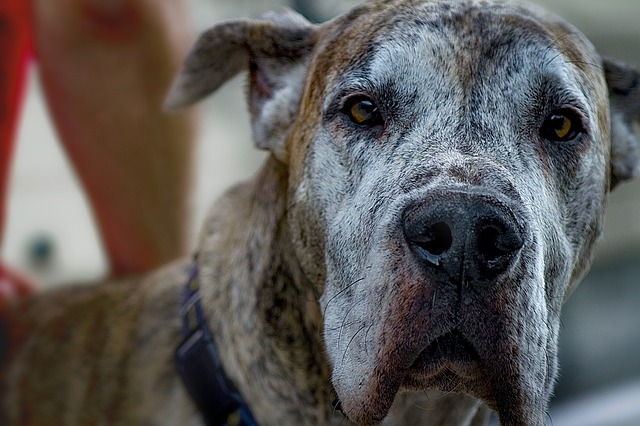
Does my dog need supplements?
Based on your dog’s overall health, your vet may recommend supplements such as an omega-3, glucosamine and chondroitin, or a probiotic. Ask your vet about the pros and cons of each supplement before deciding what’s best for your dog.
Do you need a blood, urine, or fecal sample?
Each of these tests will show something different, and your vet may or may not want to run various tests to help determine your dog’s overall health level.
What vaccinations does my dog need, and how often?
On the one hand, senior dogs have weaker immune systems and may need extra protection against certain illnesses. On the other hand, they may already have a lifetime’s worth of immunity from getting vaccinations every year, and the risk of administering additional vaccines (beyond rabies, which is usually mandatory) may outweigh the benefit.
How are his teeth and ears?
80% of dogs over the age of 4 show some level of periodontal disease. Having bad teeth can affect more than just his mouth – bacteria from inflamed gums can enter your dog’s bloodstream and affect his organs, including his heart. Your dog may need a dental cleaning under anesthesia to help remove plaque, tartar, and bacteria to help maintain his oral and overall health. On the other hand, the risk of anesthesia becomes greater as your dog ages, so your vet may not recommend a full cleaning under anesthesia.
Mild to moderate ear infections can go unnoticed by owners, but they can be uncomfortable for your dog, so make sure your vet takes a minute to peek inside his ears to check them out.

Is it normal for him to be slowing down?
Age itself is not a disease. If your dog is slowing down, it is likely a symptom of something else, such as arthritis or hip dysplasia. Ask your vet what might be causing your dog to slow down and what you can do about it.
Does my dog have tumors?
Tumors can hide in the craziest places that a pet owner may not notice. Some cancers are quite treatable if caught early, so ask your vet to check your dog thoroughly for tumors while you’re there.
Is it a good idea to add a new pet?
You may think your dog would love to have a friend to keep him company as he ages, but he may develop hearing loss, pain, or other factors that will make your dog less receptive to a new addition. Ask your vet if he thinks your dog would benefit or suffer from a new pet in the household.
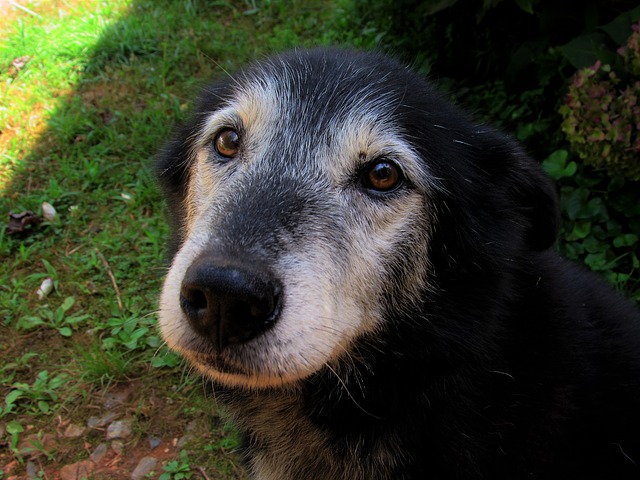
How can I improve my dog’s quality of life?
Your vet may have plenty of suggestions on how to improve, or at least maintain, your dog’s overall quality of health.
(H/T: Caring For a Senior Dog, Petcha, Pet Care Rx)
from iHeartDogs.com https://ift.tt/2ICwPgM
Here’s What To Do When You See A Dog In A Hot Car

Every summer, dog owners say things like, “I’ll only be a minute,” and, “It’s okay as long as the window is cracked.” They go on to leave their pets trapped in their vehicles while the temperature climbs. When it’s 78 degrees outside, the temperature inside a parked car can surpass 100 degrees in a matter of minutes. On really hot days, interior car temperatures are well over 110 degrees.
Thousands of dogs a year suffer from heat stroke, and many die, because their owners don’t fully understand the dangers of a hot car. Many states have enacted laws in an attempt to spread awareness and protect pets, but it doesn’t stop it from happening. You can be a part of a positive change by taking action when you see a dog trapped in a hot car.

1. Gather Information
As you approach the vehicle, take note of its color, make, and model. You also want to either write down or memorize the license plate number. If you have your phone on you, take a picture.
While you’re taking notes on the car, look in the window and evaluate the dog’s condition. Brachycephalic dog breeds, like Pugs, Boxers, and Shih Tzus, are especially susceptible to heat because of their short snouts. If you find one of these dogs in a hot car, you need to act especially fast. Regardless of the dog’s breed, their apparent condition will play a role in what you do next.
2. Alert Others
As long as the dog isn’t showing signs of immediate and life-threatening danger (excessive panting, drooling, appearing to be unresponsive), your next step should be to try and find the owner of the vehicle. Remember, however, the temperature inside a car climbs quickly, and it only takes a few minutes of extreme heat for a dog’s life to be in danger.
If the car is parked in a parking lot, head to the nearest building and talk to the manager. Ask them to make an announcement calling the vehicle’s owner. If there are other people around, ask them if they recognize the car or the dog.

3. Call the Authorities
If you can’t find the owner, it’s time to call for backup. You can call either the local police or animal control. It’s best to keep these phone numbers programmed into your phone so you don’t waste time looking them up. Relay important information to the dispatcher including the car’s exact location and the status of the dog. The person you speak with might offer instructions on what to do next based on their estimated time of arrival.
4. Know Your Rights
Above all, your goal is to save a life. If you can’t find the vehicle’s owner and animal control can’t respond soon enough, you have to decide if you’re willing to do what it takes to get that dog out of the car. Breaking into a car to save a suffering animal is a good deed, but there are also risks of legal repercussions. In many states, breaking into a vehicle for any reason is a crime. The good news is, improved awareness about the dangers of hot cars is gradually changing laws across the country.
There are eight states, including Arizona, California, Florida, and Colorado, that have “Good Samaritan” laws to protect private citizens. They allow animal advocates to break into vehicles to save animals as long as certain conditions are met. Many more states have “hot car” laws that make it illegal to endanger an animal by leaving them in a parked car. You’ll likely only have a minute to weigh your options and make your decision. Read this article for an easy rundown of the laws in your state.

5. Stick Around
Whether you find the owners, decide to wait for help, or are forced to take emergency action, stick around to make sure the dog is okay. Once they’re out of the car, move them to an air conditioned building or a shady area outside. If they seem overheated, place wet towels over their neck and under their armpits, and wet their ears and paw pads.
Save most of your water for the dog to drink. Don’t force it down their throat, but encourage them to hydrate by wetting their tongue. It’s tempting to hand them ice cubes to eat, but a drastic change in body temperature could send them into shock. Cool them down slowly and skip the ice. They should also be seen by a vet as soon as possible.
6. Spread Awareness
Dogs dying in hot cars is 100% avoidable. There will always be people who leave their dogs in the car for selfish reasons despite knowing the risks, but there are also caring dog owners that simply don’t know the facts. They don’t realize that leaving the window cracked does nothing to stimulate airflow within the car, and they underestimate exactly how hot 100 degrees Fahrenheit feels to animal wearing a fur coat. Talk to the owner of the vehicle about the risks they took and how they can make a better decision next time.
With no voices of their own, it’s up to animal advocates like you to speak up for dogs in danger. The more people who know about the dangers of hot cars, the more lives we can save.
H/T: Peta, The Humane Society of the United States
from iHeartDogs.com https://ift.tt/2Kk9lTl
dog species
What to Watch for as Hochul and Top Rivals Meet in N.Y. Governor Debate
What to Watch for as Hochul and Top Rivals Meet in N.Y. Governor Debate : By BY GRACE ASHFORD from NYT New York https://ift.tt/Lp4NlVH fr...

-
Oregon mink farm has COVID-19 outbreak after advocates warned of danger in state https://t.co/KYylBQtT17 — stowey don allen (@donstnath) N...
-
via Dogs for Adoption – dogsblog.com https://ift.tt/2T7fJm6
-
Missouri GOP still pressing to ‘deliver the knockout punch’ to Planned Parenthood https://t.co/O294YYH6mA — stowey don allen (@donstnath) ...

